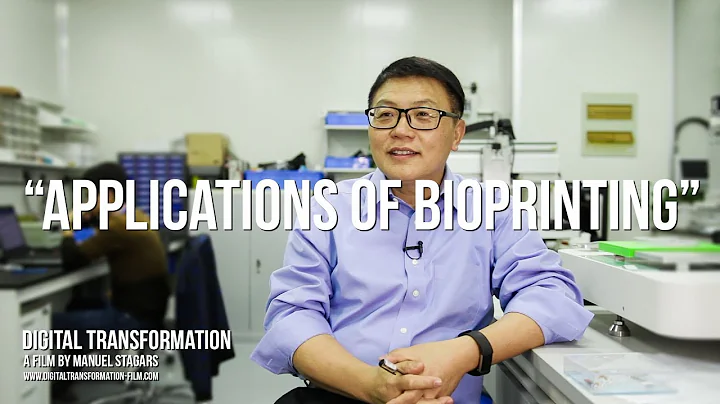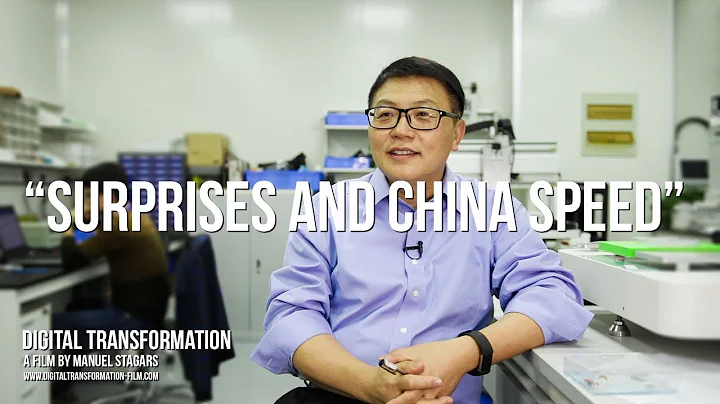Yimin Y Guan
age ~58
from Lexington, KY
- Also known as:
-
- Guan Yimin
- Yvonne Jones
- Phone and address:
-
2001 Chesapeake Ct, Lexington, KY 40513
8592237165
Yimin Guan Phones & Addresses
- 2001 Chesapeake Ct, Lexington, KY 40513 • 8592237165
- 2201 Chesapeake Ct, Lexington, KY 40513 • 8592237165
- 1108 Rolfe Ln, Lexington, KY 40513 • 8592237165
- Auburn, AL
- Metamora, IL
- Fort Myers, FL
Resumes

Manager At Lexmark
view sourceLocation:
Lexington, Kentucky Area
Industry:
Information Technology and Services
Experience:
Lexmark (Public Company; 10,001 or more employees; LXK; Information Technology and Services industry): Manager, (-)

Yimin Guan
view sourceVehicle Records
-
Yimin Guan
view source -
Address:2201 Chesapeake Ct, Lexington, KY 40513
-
VIN:4T1BK3DB8BU412805
-
Make:TOYOTA
-
Model:AVALON
-
Year:2011
Us Patents
-
Diffusion Barrier And Method Therefor
view source -
US Patent:6794753, Sep 21, 2004
-
Filed:Dec 27, 2002
-
Appl. No.:10/330728
-
Inventors:Byron Vencent Bell - Lexington KY
Yimin Guan - Lexington KY -
Assignee:Lexmark International, Inc. - Lexington KY
-
International Classification:H01L 2348
-
US Classification:257751, 257270, 257763
-
Abstract:A semiconductor device containing at least one transistor and at least one heater resistor in a heater resistor area adjacent the at least one transistor on a semiconductor substrate. The device includes a silicon substrate containing contact openings for metal contacts to the at least one transistor. A barrier layer is in the contact openings and in the heater resistor area and provides a diffusion barrier/heater resistor layer. The barrier layer is selected from a group consisting of TaN, Ta/TaAl, TaN/TaAl, TiWN, TaAlN, TiN, Ta(N , O ), WSi(N , O ), TaSi, TaSiN, WSiN, and TaSi(N , O ). A conductive layer is adjacent at least a portion of the barrier layer for providing connection between a power source and the at least one heater resistor and at least one transistor. The semiconductor device is devoid of a patterned and etched barrier layer in the heater resistor area.
-
Heater Chip With Doped Diamond-Like Carbon Layer And Overlying Cavitation Layer
view source -
US Patent:6805431, Oct 19, 2004
-
Filed:Dec 30, 2002
-
Appl. No.:10/334109
-
Inventors:Frank Edward Anderson - Sadieville KY
Byron V Bell - Paris KY
Yimin Guan - Lexington KY
George Keith Parish - Winchester KY
Robert Cornell - Lexington KY -
Assignee:Lexmark International, Inc. - Lexington KY
-
International Classification:B41J 205
-
US Classification:347 64
-
Abstract:An inkjet printhead heater chip has a silicon substrate with a heater stack formed of a plurality of thin film layers thereon for ejecting an ink drop during use. The thin film layers include: a thermal barrier layer on the silicon substrate; a resistor layer on the thermal barrier layer; a doped diamond-like carbon layer on the resistor layer; and a cavitation layer on the doped diamond-like carbon layer. The doped diamond-like carbon layer preferably includes silicon but may also include nitrogen, titanium, tantalum, combinations thereof or other. When it includes silicon, a preferred silicon concentration ranges from 20 to 25 atomic percent. A preferred cavitation layer includes an undoped diamond-like carbon, tantalum or titanium layer. The doped diamond-like carbon layer ranges in thickness from 500 to 3000 angstroms. The cavitation layer ranges from 500 to 6000 angstroms.
-
Heater Chip Configuration For An Inkjet Printhead And Printer
view source -
US Patent:6834941, Dec 28, 2004
-
Filed:Jul 15, 2003
-
Appl. No.:10/620197
-
Inventors:Byron Vencent Bell - Paris KY
Robert Wilson Cornell - Lexington KY
Yimin Guan - Lexington KY -
Assignee:LExmark International, Inc. - Lexington KY
-
International Classification:B41J 205
-
US Classification:347 62, 347 64
-
Abstract:A heater chip has a plurality of heaters each having a length, width and thickness. The length multiplied by the width (heater area) is in a range from about 50 to about 500 micrometers squared while the thickness is in a range from about 500 to about 5000 or 6000 angstroms. The energy required to jet or emit a single drop of ink from the heater during use is in a range from about 0. 007 to about 0. 99 or 1. 19 microjoules. The heater chip is formed as a plurality of thin film layers on a substrate. Energy ranges are taught for all heaters having an area from about 50 to about 4000 micrometers squared and thicknesses ranging from about 500 to about 16,000 angstroms. Printheads containing the heater chip and printers containing the printheads are also disclosed.
-
Diffusion Barrier And Method Therefor
view source -
US Patent:6887782, May 3, 2005
-
Filed:Aug 3, 2004
-
Appl. No.:10/910185
-
Inventors:Byron Vencent Bell - Lexington KY, US
Yimin Guan - Lexington KY, US -
Assignee:Lexmark International, Inc. - LExington KY
-
International Classification:H01L021/4763
-
US Classification:438627, 438618, 438625
-
Abstract:A semiconductor device containing at least one transistor and at least one heater resistor in a heater resistor area adjacent the at least one transistor on a semiconductor substrate. The device includes a silicon substrate containing contact openings for metal contacts to the at least one transistor. A barrier layer is in the contact openings and in the heater resistor area and provides a diffusion barrier/heater resistor layer. The barrier layer is selected from a group consisting of TaN, Ta/TaAl, TaN/TaAl, TiWN, TaAlN, TiN, Ta(N, O), WSi(N, O), TaSi, TaSiN, WSiN, and TaSi(N, O). A conductive layer is adjacent at least a portion of the barrier layer for providing connection between a power source and the at least one heater resistor and at least one transistor. The semiconductor device is devoid of a patterned and etched barrier layer in the heater resistor area.
-
Heater Chip Configuration For An Inkjet Printhead And Printer
view source -
US Patent:6890062, May 10, 2005
-
Filed:Jul 15, 2003
-
Appl. No.:10/619968
-
Inventors:Byron Vencent Bell - Paris KY, US
Robert Wilson Cornell - Lexington KY, US
Yimin Guan - Lexington KY, US -
Assignee:Lexmark International, Inc. - Lexington KY
-
International Classification:B41J002/05
-
US Classification:347 56, 347 62, 347 64
-
Abstract:A heater chip has a plurality of heaters each having a length, width and thickness. The length multiplied by the width (heater area) is in a range from about 50 to about 500 micrometers squared while the thickness is in a range from about 500 to about 5000 or 6000 angstroms. The energy required to jet or emit a single drop of ink from the heater during use is in a range from about 0. 007 to about 0. 99 or 1. 19 microjoules. The heater chip is formed as a plurality of thin film layers on a substrate. Energy ranges are taught for all heaters having an area from about 50 to about 4000 micrometers squared and thicknesses ranging from about 500 to about 16,000 angstroms. Printheads containing the heater chip and printers containing the printheads are also disclosed.
-
Thin Film Ink Jet Printhead Adhesion Enhancement
view source -
US Patent:6929349, Aug 16, 2005
-
Filed:Oct 14, 2003
-
Appl. No.:10/685115
-
Inventors:Byron V. Bell - Paris KY, US
Yimin Guan - Lexington KY, US -
Assignee:Lexmark International, Inc. - Lexington KY
-
International Classification:B41J002/135
-
US Classification:347 44
-
Abstract:An ink jet printhead for an ink jet printer and method for making an improved printhead. The printhead includes a nozzle plate attached to a heater chip. The heater chip is a semiconductor substrate having a resistive layer deposited on the substrate, a dielectric layer deposited on the resistive layer, a cavitation layer for contact with ink, and an adhesion layer between the dielectric layer and cavitation layer. The adhesion layer is selected from the group consisting of tantalum nitride (TaN), tantalum oxide (TaO), silicon nitride (SiN), and titanium nitride (TiN), provided the adhesion layer and cavitation layer are selected so that the adhesion layer has no elemental component in common with the cavitation layer when the dielectric layer is comprised of SiC/SiN. Adhesion between the dielectric layer and cavitation layer is significantly enhanced by the invention.
-
Deposition Fabrication Using Inkjet Technology
view source -
US Patent:7055756, Jun 6, 2006
-
Filed:Oct 25, 2004
-
Appl. No.:10/973106
-
Inventors:Frank E. Anderson - Sadieville KY, US
Yimin Guan - Lexington KY, US -
Assignee:Lexmark International, Inc. - Lexington KY
-
International Classification:G06K 19/06
H05K 1/03
H05K 1/05 -
US Classification:235492, 174256
-
Abstract:A method of fabricating an RFID antenna, the method comprising: (a) depositing a slurry upon a substrate in a predetermined pattern, the substrate including a plurality of micropores operative to drain a fluid component of the slurry from the surface of the substrate, while maintaining conductive particles of the slurry on a surface of the substrate; and (b) drying the conductive particles to secure the conductive particles upon a surface of the substrate and provide a conductive antenna. The invention also includes an RFID tag comprising: (a) a substrate including a plurality of micropores; (b) a microchip; and (c) an RFID antenna in electrical communication with the microchip and contacting the substrate, the RFID antenna comprising conductive particles deposited upon the substrate by ejecting a slurry from an inkjet printer.
-
Micro-Fluid Ejection Device Having High Resistance Heater Film
view source -
US Patent:7080896, Jul 25, 2006
-
Filed:Jan 20, 2004
-
Appl. No.:10/760726
-
Inventors:Byron V. Bell - Paris KY, US
Robert W. Cornell - Lexington KY, US
Yimin Guan - Lexington KY, US
George K. Parish - Winchester KY, US -
Assignee:Lexmark International, Inc. - Lexington KY
-
International Classification:B41J 2/05
-
US Classification:347 62
-
Abstract:A semiconductor substrate for a micro-fluid ejection head. The substrate includes a plurality of fluid ejection actuators disposed on the substrate. Each of the fluid ejection actuators includes a thin heater stack comprising a thin film heater and one or more protective layers adjacent the heater. The thin film heater is made of a tantalum-aluminum-nitride thin film material having a nano-crystalline structure consisting essentially of AlN, TaN, and TaAl alloys, and has a sheet resistance ranging from about 30 to about 100 ohms per square. The thin film material contains from about 30 to about 70 atomic % tantalum, from about 10 to about 40 atomic % aluminum and from about 5 to about 30 atomic % nitrogen.
Myspace
Googleplus

Yimin Guan

Yimin Guan

Yimin Guan
view sourceFriends:
Shuguang Li, Kitty Wu, Li Wei, Yali Hao, Di Zhang, Tomoko Saito, Xiaojing Lu

Yimin Guan
view sourceFriends:
Bieu Ieong, Trevan Marshall, Akash Patel, Vincent Michael
Youtube
Get Report for Yimin Y Guan from Lexington, KY, age ~58







